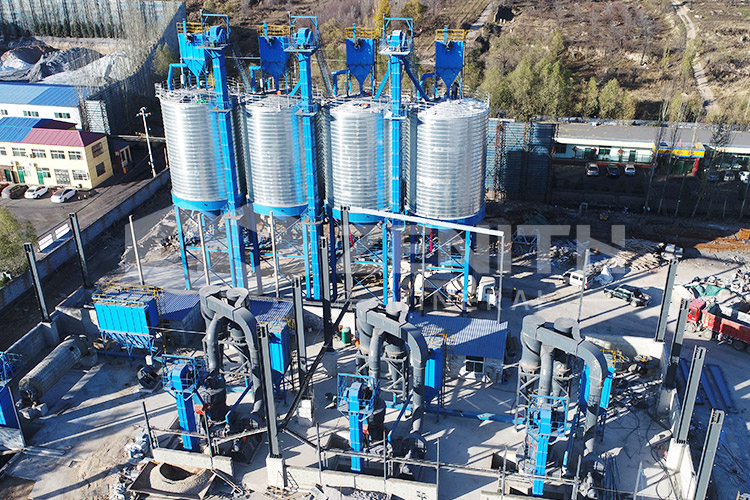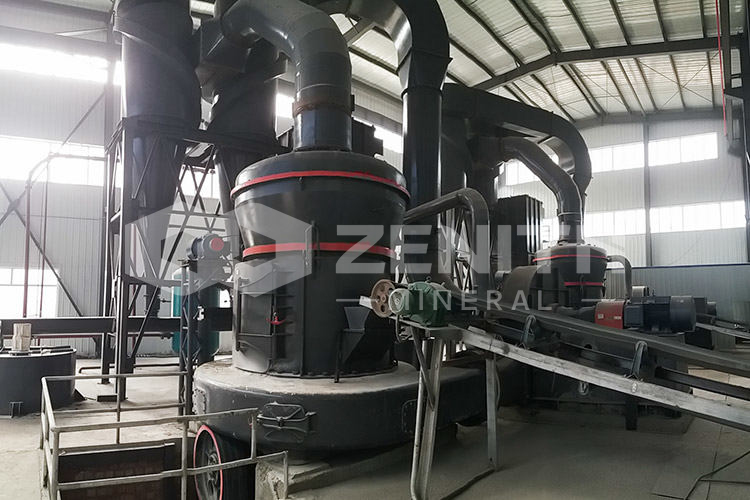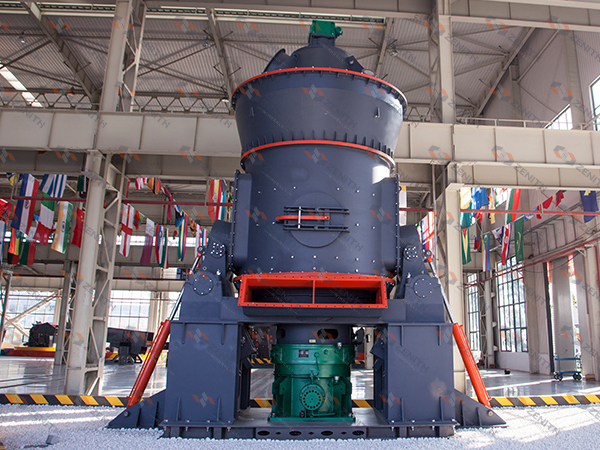A project to produce 400,000 tons of high-performance cementitious materials annually, with finished products intended for mine backfilling.
2025-11-11 04:56:00
The mining industry faces increasing pressure to implement sustainable practices while maintaining operational efficiency. One critical solution gaining widespread adoption is mine backfilling – a technique that uses specially formulated cementitious materials to fill underground voids created by mining operations. This article explores a comprehensive project designed to produce 400,000 tons of high-performance cementitious materials annually specifically for mine backfilling applications, utilizing advanced grinding technology from Zenith Machinery.
Mine backfilling serves multiple essential purposes: it provides ground support, enables maximum ore recovery, manages tailings, and reduces surface environmental impact. The quality and consistency of backfill material directly impact mining safety and efficiency. This requires specialized grinding equipment capable of producing materials with specific particle size distributions and chemical properties.
_1762808160944.jpg)
Technical Requirements for Backfill Materials
Successful mine backfilling demands precise material characteristics. The cementitious binder must develop adequate strength within specified timeframes while maintaining pumpability and minimal segregation. Particle size distribution significantly influences these properties – materials that are too coarse may settle rapidly in pipelines, while excessively fine particles can increase water demand and reduce strength development.
For most backfilling applications, the optimal particle size ranges from 20 to 400 mesh. This specification aligns perfectly with Zenith's MTW European Trapezium Mill and MTM European Trapezium Mill, both capable of producing precisely this range with exceptional consistency. The project's 400,000-ton annual output requires reliable, high-capacity equipment that can operate continuously with minimal downtime.
Equipment Selection and Configuration
After thorough technical evaluation, the project will utilize multiple MTW European Trapezium Mills as the primary grinding units. These mills offer several distinct advantages for large-scale backfill material production:
_1762808160947.jpg)
The MTW series demonstrates remarkable energy efficiency, consuming approximately 60% less energy than traditional ball mills of equivalent capacity. For a project of this scale, this translates to substantial operational cost savings and reduced environmental impact. With capacity ranging from 3 to 22 tons per hour per unit, the configuration can be optimized to meet the required annual production of 400,000 tons while maintaining operational flexibility.
Another critical advantage is the adjustable output fineness. The modular impeller adjustment system enables quick changes to product specifications without requiring extensive equipment modifications. This flexibility allows the operation to produce different backfill formulations for various mining applications from the same equipment base.
Integrated Production System Approach
The project incorporates a complete production system from raw material intake to finished product packaging and dispatch. The MTW mills function as the heart of this system, with integrated feeding, classification, and collection components ensuring seamless operation.
The working principle begins with crushed raw materials being fed to the main grinding chamber via variable frequency belt feeders. Following grinding, materials proceed to powder selectors for classification, where qualified fine powder is separated as finished product in cyclone collectors. Coarse particles automatically return for regrinding, creating a closed-loop system that maximizes efficiency and product consistency.
_1762808160949.jpg)
Environmental and Operational Benefits
Beyond the primary application in mine backfilling, the project delivers significant environmental advantages. The complete system operates under controlled positive and negative pressure conditions, with integrated pulse dust collectors ensuring emissions remain well within international environmental standards. The high-efficiency impeller fan system improves air induction efficiency from 62% to 85%, reducing energy consumption while maintaining optimal operational conditions.
The compact design of the MTW series requires less floor space than traditional grinding systems, reducing construction costs for the production facility. This integrated approach from bulk material to finished powder minimizes handling requirements and potential material loss points throughout the process.
Quality Assurance and Global Standards
All equipment specified for this project carries ISO international quality system certification, European Union CE certification, and Customs Union CU-TR certification. These credentials ensure that the produced backfill materials meet the stringent requirements of modern mining operations worldwide. Zenith's global experience – with a marketing network covering over 180 countries and overseas offices in more than 30 nations – provides additional assurance of equipment reliability and technical support capability.
_1762808160950.jpg)
The project represents a significant step forward in sustainable mining practices. By producing specialized cementitious materials specifically engineered for backfilling applications, mining operations can achieve improved safety, reduced environmental impact, and enhanced resource recovery. The selection of appropriate grinding technology proves crucial to achieving these objectives while maintaining economic viability.
As mining companies worldwide increasingly adopt backfilling as standard practice, the demand for high-quality, consistently produced cementitious materials continues to grow. This 400,000-ton annual production facility, equipped with state-of-the-art grinding technology, positions itself as a model for similar projects globally, demonstrating how technical innovation can drive both operational excellence and environmental responsibility in the mining sector.

Frequently Asked Questions
What makes cementitious materials suitable for mine backfilling?
Effective backfill materials must develop controlled strength, exhibit minimal segregation, maintain pumpability over distance, and demonstrate chemical compatibility with local groundwater. The particle size distribution achieved through precise grinding directly influences these characteristics.
How does the energy consumption compare to traditional ball mills?
The MTW European Trapezium Mill consumes approximately 60% less energy than traditional ball mills of equivalent capacity, representing significant operational cost savings and reduced environmental impact.
What quality certifications ensure equipment reliability?
All equipment carries ISO 9001 international quality system certification, European Union CE certification, and Customs Union CU-TR certification, ensuring compliance with global standards.
Can the system produce different fineness specifications?
Yes, the modular impeller adjustment system allows quick changes to product fineness from 30 to 325 mesh without major equipment modifications, providing operational flexibility.
What environmental controls are incorporated?
The system operates under controlled pressure conditions with integrated pulse dust collectors, ensuring emissions remain within international environmental standards while minimizing dust spillage.
How is consistent product quality maintained?
Automated classification systems continuously monitor particle size, with coarse particles automatically returning for regrinding, ensuring consistent final product specifications.
What technical support is available globally?
With overseas offices in more than 30 countries and service coverage in over 180 nations, comprehensive technical support and spare parts availability are ensured worldwide.








